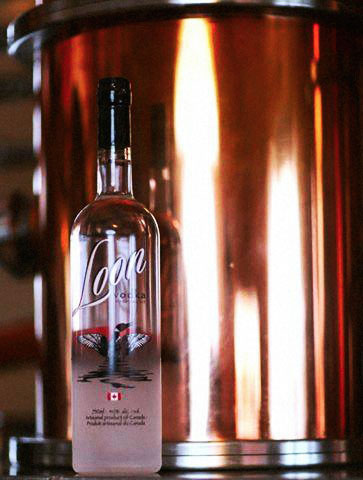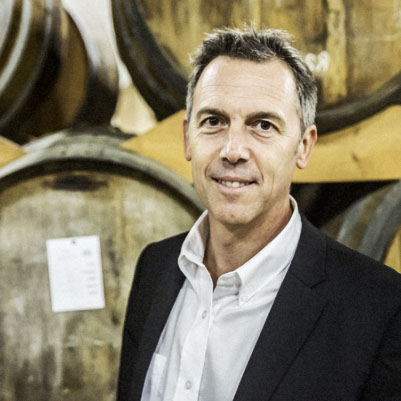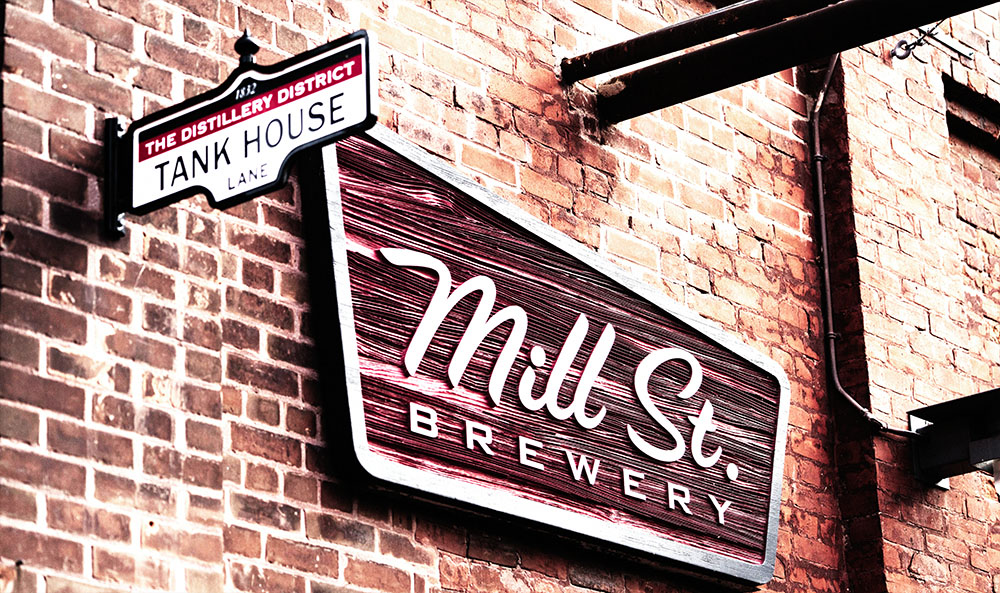Mass Produced ... By Hand: The Patrón Spirits Company

It may seem incongruous to put the term “handmade” in the same sentence as “over 20 million bottles per year.” Yet The Patrón Spirits Company, maker of the Patrón line of ultra-premium tequilas, can accurately lay claim to both statements. “Everything is done the same way today as we did 25 years ago,” emphasizes Patrón’s Regional Vice President Burt Stewart.
25 years ago, in 1989, The Patrón Spirits Company co-owners John Paul DeJoria and Martin Crowley had a vision of raising the quality and profile of tequila above the salt/shot/lime/repeat/pray-for-a-merciful-death-the-next-day level for which it had become infamous. Enlisting the considerable expertise of Master Distiller Francisco Alcaraz, they came up with a recipe and a production process that spared no expense.
You pretty much have to watch the entire procedure play out to understand the amount of labour involved in crafting and packaging the Patrón family. Since the Hacienda de Patrón (the distillery and office complex) is closed to the public, this isn’t something all that many people are able to do. However, the artisanal nature of Patrón tequila begins even before the stills are fired up.
It’s a brisk September morning in Jalisco’s Los Altos (Highland) Weber Blue Agave fields in the municipality of Arandas. I’m with Patrón agronomist Miguel Angel, watching the harvest of the piñas — the heart of the agave plant (which is not, as some might suggest, a type of cactus) — as the sun begins to gradually warm me up. Using a coa (essentially a hoe-shaped knife on the end of a long pole), the jimadores shear the leaves and much of the skin off the plant (more skin than most other tequila producers would insist on, according to Angel).
Angel explains that in order to keep a steady supply of top-quality agave available, long-term contracts are negotiated among eight agave-growing families in the Highlands. Once harvested, the piñas are checked for sugar levels using a refractometer (the same gizmo used by grape growers).
The ripest specimens are selected and trucked off to the distillery where they are halved, quartered, and loaded into traditional stone ovens where they are slowly steamed for 72 hours to convert the plants’ starches to sugars. It was interesting to taste the difference between raw agave (which doesn’t taste like much), the sweet, nutty/vegetal properly cooked sample, and the charred bitterness of an overcooked section. From here, the agave is shredded and the juice extracted. The extraction process for Patrón tequila, once again, follows tradition. The shredded agave is loaded into a circular trough and crushed by a two-ton Tahona wheel. The resulting mix of agave fibre and juice is fermented in large pine vats before distillation.
The distillery does use a pair of more modern roller mills to extract a percentage of juice. This is fermented separately, without fibres. Spirit distilled from roller milled agave tastes different than that from Tahona wheel-crushed plants; the former being fruitier, the latter slightly earthier. The traditional Patrón tequilas combine the two for the final product. The new Roca (Spanish for “rock”) Patrón family uses only Tahona-extracted fibre and juice. After the final blending of the distillate, it is sent to the barrel aging cellars in the case of the reposado (rested) or añejo (aged), and to the bottling line for the silver.
If the whole process sounds like a hell of a lot of work, it is. In fact, some 1,200 locals are employed in the crafting and packaging of the Patrón products. A commitment to the regional economy, its employees, and a massive pledge to the environment keep the Patrón operation both traditional and forward-looking.
“Other companies expand by automating,” Angel explains. “At Patrón, rather than automate, we replicate.”
This means expanding the number of Tahona wheels from one to ten; increasing the number of cooking ovens and fermenting vats; expanding the composting facilities and hiring more people. The company prides itself in saying that 60 hands touch each bottle of Patrón during creation. And those bottles? Not only are they hand inspected, finished, numbered, labelled and packed, but they’re also made by hand from recycled glass.
Roca Patrón Silver ($80)
Made from cooked blue agave that has had its juice extracted using a two-ton Tahona wheel, the Roca (“rock”) line is the newest from Patrón. The Silver, bottled at 45% ABV, shows earthy, mildly smoky cooked agave aromas combined with just a dash of white pepper. Clean and balanced on the palate, it boasts rich, pure earthy agave flavours with mild pepper notes wrapped in a dry, elegant package.
Roca Patrón Añejo ($90)
The Roca Patrón Añejo, (44% ABV) is aged for 14 months in ex-bourbon barrels. It leads off with spicy oak notes combined with some mildly stony/vegetal agave nuances, as well as a touch of caramel, ginger and eucalyptus. Nice complexity in the mouth with spicy oak notes mingling seamlessly with the distinctive cooked agave flavours and a good measure of pepper, baking spice and smoke which trail off into a long, balanced finish.
“Good Booze Grows In Ontario”: Distillerie Rheault

Loon Vodka ($45)
Made using an ancient Russian recipe that calls for the use of rye or wheat, quadruple distillation, the addition of milk during the last fermentation and filtration through activated charcoal, Rheault’s award-winning Loon Vodka has two things not typically found in vodka: aroma and flavour. Spring flowers, pear, vanilla and a very unusual pumpkin-like aroma very reminiscent of sake. Viscous, slightly spicy with some vanilla and faint herbal/vegetal nuances and very nice overall balance.
Sure, the awesome home theatre in your living room may be the envy of the neighbourhood, but Mireille Morin and Marcel Rheault have you beat: they’ve got a still. Which probably makes them way more popular than you with the people next door.
“It is truly in our living room, which is 24 by 26 feet,” Morin confirms. “The rest of the equipment — fermentation tank, mash tank and so on — are just below, in the garage.”
Now, before you offload your HDTV setup on Kijiji to make way for your very own micro booze kettle, you might want to consider what Morin has to say. “We’re actually the only distillery in a house in Canada … and were told we’d be the last one.”
You see, Distillerie Rheault — as the operation is called — is located in Hurst, Ontario, a scenic 13-hour or so drive north of Toronto. As the town falls within the Unorganized South West Cochrane District, Morin and Rheault were able to bypass a lot of by-laws that would typically prevent this sort of entreprenhoochship happening elsewhere in a province not exactly famous for lenient booze laws.
Originally bitten by the distilling bug after taking a course on it at Michigan State University, the pair had previously been growing hydroponic English cucumbers in a commercial greenhouse. At a presentation they were giving along with Agriculture Canada, the duo was given a piece of sage advice by Ron Gerald, Director of the Horticulture and Special Crops Division.
Said Gerald to Rheault: “You know, Marcel, the person who grows potatoes makes a living; but the person who turns those potatoes into vodka makes a lot of money.” Thought Rheault: “Why not apply for a Spirits License for Northern Ontario to promote agriculture in an area known largely for lumber? What a perfect way to diversify our economy.”
Five years later, the company is producing a range of spirits — including the award-winning Loon Vodka — from a 280-litre German-made still that combines a pot and a 20-plate refracting column while they await delivery of a new 3000-litre still (and, as one might suspect, the construction of a new room).
Besides its unique (and methanol-free) Loon Vodka crafted from an ancient Russian formula, Distillerie Rheault produces fruit liqueurs and Rheault’s Spirit — a “white dog” whisky people can age to their own tastes in an accompanying two-litre micro cask.
The Whisky Maker’s Gin: Bruichladdich
There may be few things you can really count on in the world today, but you can always count on Jim McEwan to weave an engaging yarn. Though his “official” title with Islay’s Bruichladdich distillery is the somewhat dry sounding Production Director, McEwan is one of the world’s most respected whisky makers. Which is why it was so fascinating to hear him talk passionately about … gin?
It’s no secret that barrel-matured spirits can be a pricy proposition. Not only is there something of a worldwide barrel shortage at the moment that is influencing prices (in the upward direction), but spirits tied up in casks don’t make the distiller much money. Like, none. And while it would be nice to release current aged stock to market, soaring global demand has severely depleted many a distillery’s reserves.
Whisky distillers in particular have tried to fend off the accountants by releasing new, un-aged products (such as “white dog”). McEwan took a different tack, figuring (correctly) that he could craft a top-quality, distinctive, artisanal spirit that didn’t require aging, would inject some cash flow into the distillery, and wouldn’t sully an otherwise stellar distilling reputation. Enter The Botanist, a unique gin that reflects not only McEwan’s distilling talents, but also the flavours of Islay’s native botanicals. It started, according to McEwan, as “a crazy dream.” But the pieces began to fall into place.
“Amazingly, two botanists had come to Islay,” McEwan recalls. “They were staying in Port Ellen — not far away — so I went to see them. They were a husband and wife team [Richard and Mavis Gulliver] … and I explained this crazy dream I had to them.” Out into the field they went, returning with a collection of 30 local botanicals, of which McEwan selected 22. His experience as a blender shone though as he created his blend simply by rubbing the elements together and seeing which worked best.
Enlisting a cranky old (circa 1959) Lomond still (affectionately called “Ugly Betty”) and developing a unique infusion box that would allow the heated, pressurized alcohol vapours to extract flavours and aromatics from the botanicals, McEwan finally employed some, how should this be put, “Scottish persuasion,” to convince a British small batch gin distiller to dump some secrets. Long story short, McEwan distilled what many were convinced he couldn’t, but all concede he did: a complex, highly aromatic and beautifully textured artisanal gin.
“The chances of finding botanists, finding a pot still, finding a guy who’s gonna help me — the chances of all that; you’d say it couldn’t be done … but it happened.”
The Botanist Islay Dry Gin ($50)
While his Bruichladdich Islay single malt scotches age patiently, master distiller Jim McEwan satisfies his curiosity (and the accountant’s impatience) with this superlative gin featuring the aromas and flavours of 22 local botanicals. Complex and fragrant with multifaceted aromas of juniper, lemon, cardamom, nutmeg, pine, cedar and cut flowers. Fresh, clean, dry and rich with seamlessly integrated flavours and notes of anise and cinnamon. Hold off on the tonic with this one; savour it neat.
The Bad Boy of Brandy: Armagnac de Montal
“The French people export cognac,” says Philippe Layus-Coustet, general manager of the respected firm of Armagnac de Montal “but they drink Armagnac.” Hailing from Gascony, the land of D’Artagnan and Cyrano de Bergerac, Armagnac — much like calvados — is another exceptional French brandy that has historically been lost in the shadow of cognac, though it has been around longer (Armagnac is possibly the oldest brandy distilled in France).
The distillation of Armagnac has remained rustic and local, left to the hands of close to 200 regional farmers (who often avail themselves of the services of a travelling, portable still). This ensures consumption stays more or less in country (50 percent goes to the export market in contrast to cognac’s 99 percent). Add to this the fact that Gascons are notoriously temperamental and not known to cooperate with each other, and the idea of a unified marketing effort basically goes the way of the angel’s share.
Comparisons between cognac and Armagnac are (despite being inevitable) actually pretty pointless. The terroir between the production regions differ; the grape varieties used to make the base wine differ; the distillation and aging regimes and the type of wood used for maturation differ. They are both French brandies, but that’s about it.
Layus-Coustet points out that though the region — and the production of Armagnac — has not really changed that much, technological advancements have allowed for improvements in the base wines that are distilled, which, in turn, result in higher quality products as well as new products. Un-aged Blanche d’Armagnac was granted an AOP in 2007, having attained a (probably rare) consensus among the region’s producers for production and packaging standards. And even the youngest “VS” Armagnacs (which M. de Montal scoffed at in the past), are now less rough and considerably more drinkable.
Speaking of M. de Montal (a fellow who has been known to do things the way he wants, when he wants), Layus-Coustet admits, “He can be a bad boy. Just like Armagnac is the bad boy of brandy. But they are both true Gascons: not neutral and flat; rather at once fiery and sophisticated.”

Armagnac de Montal XO ($89)
Aromas of toasted walnut, dried apricot, treacle, earth, leather and prune are all detectable in this complex and aromatic XO. Rich and warm in the mouth with layers of dried fruit, Christmas cake, nutmeg, vanilla, clove and anise on the palate with a comforting, lingering finish.
Armagnac de Montal 1977 ($110)
Hints of dried orange peel, cocoa, rancio, vanilla, aged wood and a mild earthiness round out the aromatic profile of this classy brandy from the Bas Armagnac region (generally regarded as the best of the region’s three distinct areas). Rich, smooth and flavourful with hints of dried apricot, toasted hazelnut, vanilla and a touch of prune. Very long and well-balanced.
Apple Sauce: Calvados Boulard
“That’s a bit of a difficult question to answer since I don’t have any samples from 1825 as a comparison,” jokes Vincent Boulard when asked about changes in the style of calvados, France’s inimitable apple-based brandy, since the inception of Calvados Boulard in said year. Five generations later, M. Boulard is at the helm of a distillery that has become the leader in the production of calvados, with 80 percent of its production being exported to markets across the globe.
As with Armagnac, calvados has played understudy to cognac’s lead on the French brandy stage. That being said, the distilled cider has gained a high reputation and a loyal following from connoisseurs as well as bartenders worldwide, the former due to its exceptional quality, the latter because of its versatility. And just because it tends to slip under the radar of trend hounds, this doesn’t mean that exciting developments haven’t been afoot within the calvados industry.
“My grandfather’s generation focused on the significance of wood aging and its influence on the character of calvados,” Boulard recounts, “and that is for sure a very important aspect. However, I am personally convinced that the present and future of calvados will depend on the importance given to the fruit used to produce it. When you consider how tasty an apple is, and when you consider the hundreds of different varieties of apples available to us, the potential for calvados to develop a greater range of flavours – and especially aromas – is certainly there.”
Boulard points out that in spite of the numerous varieties, the apples in their orchards (planted in the heart of the calvados production area — the Pays d’Auge appellation) fall into one of four flavour categories: bitter, bitter-sweet, sweet, and tart/acidic. The key to great calvados, he says, is finding the ideal blend of these styles. An experimental 80-hectare orchard planted by Boulard’s father for this exact purpose has helped with this task. But experimentation has also extended to the distilling process.
“Distilling is largely the art of capturing aromas when you turn a liquid into gas,” Boulard reveals. “And distilling a cider at five percent alcohol requires a different approach than distilling a wine at nine percent alcohol.”
Knowing this, Boulard and his distilling team have been investigating the impact of altering both the age of the base cider and length of distilling cycle, as well as the temperature of the still.
“Traditionally, the cider was left for up to a year before being distilled,” he explains. “But as the cider ages, more unwanted volatile compounds develop. We have found that distilling the cider when it is only two months old – or less – results in more esters and a more aromatic final product.”
When it comes to distilling techniques, Boulard’s team has employed gas chromatography to help them determine the point in the distilling process when the maximum concentration of aromatic compounds has been released.
And though it sounds pretty high tech, Boulard insists that he has no intention of abandoning tradition. “The Boulard vision of calvados embraces both tradition and modernity,” he confirms, while adding that it’s important to decide what traditional practices are worth preserving and which ones should be abandoned.
Of course it’s important not to lose sight of why Boulard is undertaking all this work. The end result is to create a spirit that is a pleasure to drink. For maximum enjoyment, Boulard feels that the use of the traditional balloon-shaped brandy “snifter” is one of those traditions that’s best abandoned. “A longer, thinner glass — more like a standard wine tasting glass — will give you the best aromatic profile,” he advises.
Boulard Calvados Pays d’Auge Grande Solage ($50)
Seductive aromas of apple cider, vanilla and flower blossom with traces of caramel glide into a flavour profile that features nutmeg-infused baked apple, fruitcake, clove and toffee. Perfect for fireside sipping.
Boulard Calvados Pays d’Auge XO Auguste ($195)
Named in honour of Pierre-Auguste Boulard, the company founder, this is a complex, multifaceted spirit that offers up a bevy of intriguing aromas including rich apple compote, vanilla, caramel, toasted nuts, polished wood and fruity/spicy nuances. Very intense flavours suggesting baked apple, clove, and honey with nutty/woody overtones. Incredibly long on the finish.
The Spirit of Beer: Mill Street Brewery

Mill Street Brewery Tankhouse Bierschnaps ($35)
Using Mill Street’s flagship Tankhouse Ale as a base (with some additional hops thrown in for good measure), this 45% ABV spirit captures the soul of its mother brew. Up front gingersnap, with pine resin, grapefruit peel, and malt aromatics. Powerful and intense in the mouth with recurring ginger/candied dark fruit flavours with suggestions of vanilla and herbs. Dangerously drinkable. Try a chilled shot with a Tankhouse Ale chaser … if you dare.
Mill Street Brewery Coffee Porter Bierschnaps ($35)
Earthy aromas lead to hints of caramel, toast, espresso and toasted nuts followed by a viscous texture and a taste profile featuring fig, black coffee, cocoa and black pepper. It bids farewell with a long, coffee-tinged finish. Unique and very enjoyable.
Helping to establish a successful, highly acclaimed and expanding microbrewery and beer hall might be enough for some people, but not for Mill Street brewmaster Joel Manning. On a “fact finding” mission through Germany, Manning was introduced to a uniquely Teutonic tipple: bierschnaps.
A far cry from the gloopy “schnapps” (note spelling) we were at one time inundated with (those of the peppermint, root beer, peach, etc. varieties), bierschnaps are high-octane spirits made from the double distillation of beer (typically brewed to a slightly higher than normal strength for more efficient processing).
Manning decided to try his hand at crafting the first ever Canadian bierschnaps, and jumped into distilling with both feet, experimenting to perfect the technique, then acquiring a production-level kettle from Germany that combines elements of both a pot and column still. Not only would it be the first such ultra-niche product in the country, it would be the fist time since 1990 that Toronto’s Distillery District actually produced potable spirits.
Manning had the physical space in his newly constructed Beer Hall, the raw material, and the still. What he didn’t have was a stillmaster. Enter Kaitlin Vandenbosch, a young Mill Street employee with the ideal background for the job.
“I got hired by Mill Street right out of Heriot-Watt University in Scotland with a degree in brewing and distilling,” Canadian-born Vandenbosch reveals, suggesting that perhaps the Mill Street brass wanted her for her distilling rather than brewing skills, though they didn’t let on about it. In any case, when the opportunity arose to head up the distilling end of things, she had her work cut out for her. But bierschnaps was something of a new frontier … and a new challenge.
“There aren’t a lot of examples of bierschnaps in North America, or even in Europe,” she maintains. “By the time I got on board, Mill Street had already experimented with distilling every beer it made using a small lab still, and we determined that ales made a much better base than lagers,” she explains, noting that the higher sulphur content in lagers necessitates a much slower distillation and/or extended barrel aging.
Vandenbosch has made four bierschnaps to date, one from Mill Street’s Tankhouse Ale (in a few different versions), Coffee Porter, Frambozen (from raspberry/wheat beer), and Vanilla Porter. “The Tankhouse will be our mainstay,” she suspects. “The rest will probably follow along with our seasonal beers.”
The concept of “seasonal spirits” will no doubt add to the uniqueness of Mill Street’s already rather exclusive distillates. With Vandenbosch’s talent and curiosity combined with Mill Street’s penchant for experimentation and innovation, who knows what may bubble out of the team’s cauldron in the future.
